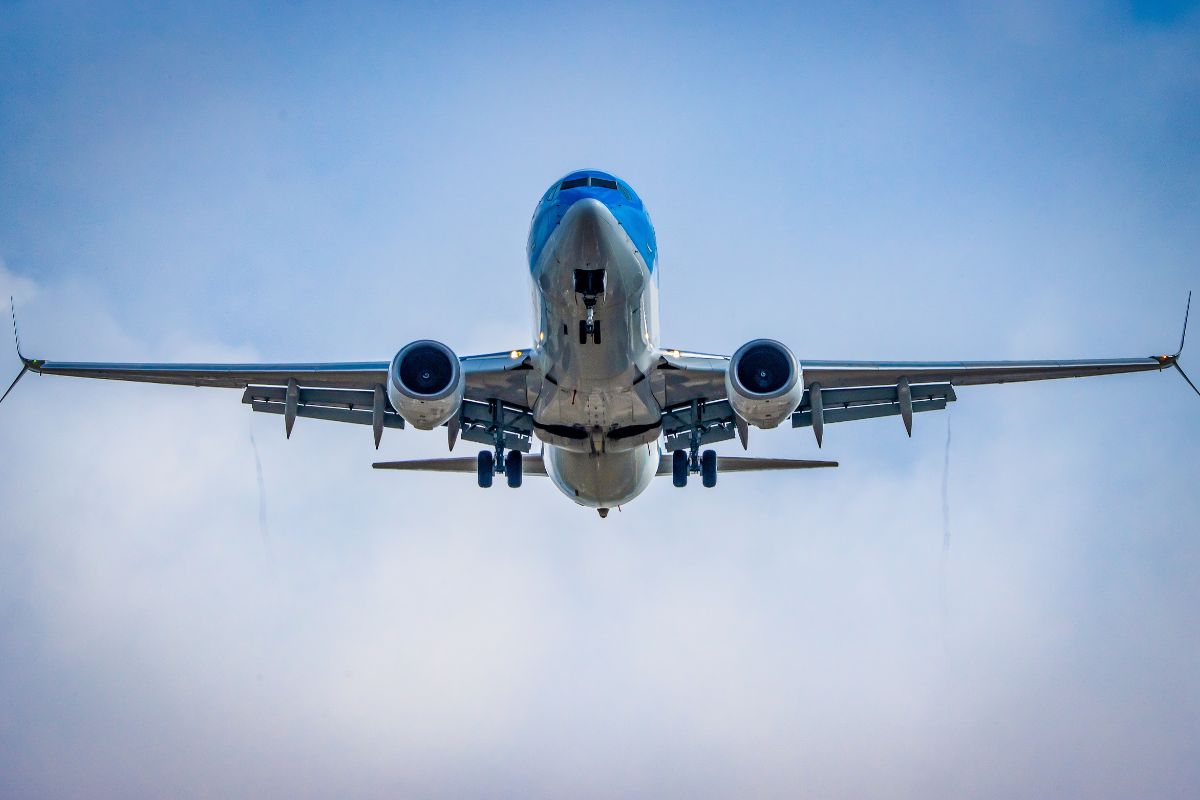How to Book Cheap Flights Without Hidden Fees

Finding truly low airfares means looking beyond the initial ticket price. Many airlines tack on extra charges for things like baggage, seat selection, and credit-card use that can more than double the base fare. To avoid surprise costs, start with smart search strategies and then watch carefully for add-on fees. This guide explains how to scout for low fares and which tools to use, what fees to watch out for, and how to make the most of loyalty perks and travel credit cards.
Best Practices for Finding Cheap Flights
-
Use Flexible-Date Searches. Most flight search tools let you scan fares for whole weeks or months. For example, Skyscanner’s “Whole Month” or Google Flights’ calendar view highlights the cheapest days to fly. Shifting your trip by even a few days – or flying midweek instead of on a weekend – can shave tens of dollars off a fare. (Industry data show flying on Tuesday–Thursday or Sunday can save ~$50–100 per ticket versus busy weekend days.) When possible, avoid peak travel seasons (summer in Europe, winter holidays, etc.), which tend to be much more expensive.
-
Search Multiple Airports. If you have nearby alternatives, include them in your search. For example, Google Flights allows up to seven departure and arrival airports at once. A short train or drive to a bigger airport (or a smaller one) can sometimes unlock much lower fares.
-
Book at the Right Time. General trends suggest booking international and long-haul flights several months in advance. For instance, experts advise 3–5 months ahead for summer travel and 5–7 months ahead for trips to Asia/Oceania. For major holidays (Thanksgiving, Christmas, etc.), fares often bottom out about 6–8 weeks before departure. However, there’s no guaranteed “best day” of the week to buy—airfares fluctuate constantly. The real key is to use price alerts.
-
Set Price Alerts and Watch for Deals. Use apps and websites (like Google Flights, Hopper, Kayak, Going.com, etc.) to track prices. For example, Google Flights and Hopper both let you watch a trip and will email you when the fare drops. Tech-savvy travelers often use Hopper’s predictive tools or Going.com (formerly Scott’s Cheap Flights) to know when to buy or wait. Monitoring fares with alerts can help you jump on a sale or decide when to pull the trigger.
-
Consider Last-Minute Fares (With Caution). True last-minute bargains are rare—airfares usually rise as departure approaches. That said, if your plans are flexible, you can sometimes find a deal on unsold seats. Sites like Going.com or Hopper can flag last-minute price dips or “flash” sales. In general, though, don’t count on big savings at the last minute, especially during high-demand periods. Instead, plan ahead whenever possible, and use alerts to catch any unexpected drops.
Top Tools for Transparent, Low-Fare Searches
Look for flight search engines and apps that show all taxes and fees upfront and don’t add extra booking charges. Three highly-regarded tools are:
-
Google Flights. Google Flights is a powerful free search engine (not a booking site) that aggregates fares from 300+ airlines and agencies. It displays real-time prices (including taxes) for flexible dates, nearby airports, and multi-city routes. The calendar and price-graph features make it easy to spot the cheapest days. Google Flights itself doesn’t charge any fees; when you decide to buy, it typically sends you directly to an airline or agency’s site. (One caveat: some smaller budget carriers may not appear on Google Flights, so check their own websites if you suspect a cheaper fare.)
-
Skyscanner. Skyscanner is a global flight search engine with a reputation for transparency. The company emphasizes “No hidden fees. No funny business. The price you see when you search is what you’ll pay”. Skyscanner’s “Everywhere” search (for flexible destinations) and “Whole Month” view help you find unexpected deals. It scans airlines worldwide and even includes many low-cost carriers. Unlike some travel agencies, Skyscanner does not tack on extra booking fees of its own (you pay the airline or agency price).
-
Momondo. Momondo is another popular meta-search engine. It combs hundreds of airlines and online agencies, including lesser-known sites, without adding any surcharges or booking fees. (One blog notes: “Momondo is an aggregator…without adding fees or any extras”.) This broad search often turns up cheaper flights that bigger sites miss. Like Google Flights, Momondo will redirect you to the actual seller to complete the booking, so you see the fare (and pay) exactly as listed.
-
Others. Kayak, Hopper, and certain airline apps (like Southwest’s or JetBlue’s) are also useful. Kayak and Hopper are free to use and don’t charge booking fees. Hopper specializes in fare predictions and can hold a price (for a small refundable fee) if you want to lock in a deal. Travel newsletters (Going.com, Scott’s Cheap Flights, etc.) and airline deal alerts can also flag bargain fares. The key is to compare multiple sources and to always double-check the “all-in” price (taxes and basic fees included) before booking.
Common Hidden Fees (and How to Avoid Them)
Once you find a low fare, be prepared for extra charges. The listed price often omits several “add-on” fees. Typical hidden costs include:
-
Baggage Fees: Many airlines charge extra for both checked bags and larger carry-on bags. A first checked bag often costs $30–$35 each way on U.S. domestic flights. (Low-cost carriers like Spirit, Frontier, or European budget airlines may charge $40 or more.) Checked-bag fees add up quickly for families or round trips. Even some international carriers now charge for “standard” baggage on basic fares. Avoidance tips: Pack as lightly as possible (some tickets still allow a free personal item under the seat). If you must check luggage, pay in advance online; last-minute or airport bag fees are higher. Better yet, use an airline-affiliated credit card: many airline credit cards include one or two free checked bags as a cardholder benefit (often extending to up to 4 travel companions on the same reservation). For example, cards like the Delta SkyMiles or Southwest Rapid Rewards credit cards automatically reimburse the checked-bag fee when you purchase the ticket with that card.
-
Carry-On and Overhead Bag Fees: Some ultra-low-cost airlines (and even legacy carriers’ lowest fares) now charge for bringing a standard rollaboard into the cabin. These fees typically start around $25–$50 each way if you pay in advance, and can double at the gate. (Budget carriers often allow only a very small personal item free, forcing you to pay for anything larger.) Avoidance tips: Before booking, check the fare rules carefully. If you need a large carry-on, consider upgrading to a fare class that includes it (often a modest price hike in fare that saves the bag fee). Otherwise, pack everything into the smaller allowed bag or personal item to skip that charge.
-
Seat Selection Fees: Choosing your exact seat (especially extra-legroom or front-row seats) usually costs extra. Even standard seat reservation can be $5–$25 per segment on many airlines. Avoidance tips: If you’re okay not picking a seat, skip this fee entirely. Airlines will still assign you a seat at check-in (it may be a middle or rear seat, but it’s free). Many travelers opt to risk a random assignment rather than pay. Alternatively, you can earn that perk: elite loyalty status or premium fare classes often include free seat selection (and even complimentary upgrades). As NerdWallet advises, higher status or a higher cabin fare gives you front-of-the-line seat choice and may even upgrade you free.
-
Ticket Change or Cancellation Fees: Traditional change fees (often $200 or more) have been largely waived on major U.S. airlines for economy tickets, but they still exist for low-cost carriers and on award tickets. If you booked a basic-economy fare, changes are usually forbidden or costly. Avoidance tips: To be safe, only buy the rock-bottom “basic” fares if your plans are 100% fixed. Otherwise, either pay a bit more for a flexible fare or ensure your airline does not charge change fees. Also, airline elite status often waives change fees – for example, top-tier AAdvantage members get free changes on American Airlines.
-
Booking and Service Fees: Some third-party sites or travel agencies add a booking fee (e.g. $10–$30 per ticket) on top of the fare. Always compare the total price on the OTA vs. booking directly with the airline. If possible, book directly with the airline using the fare you found, avoiding any hidden “processing” fees. Also beware of ticketing carriers that impose their own surcharges – for instance, UK-based airlines add high aviation taxes that smaller European carriers may not.
-
Credit-Card Surcharges: A few airlines (especially low-cost European ones) charge an extra fee for paying by credit card. For example, the quoted research notes some budget airlines even charge for “using a credit card to book”. These fees usually range 1–3% of the transaction. Avoidance tips: If you see a payment fee, try using a different method (some allow PayPal or a debit card without surcharge). Better yet, put the purchase on a credit card that doesn’t charge foreign transaction fees. In regions where credit-card fees are banned (e.g. EU), carriers cannot add them – but in other places, always check the final payment screen for any extra charge.
-
On-Board Extras: Meals, drinks, Wi-Fi, and baggage insurance are not included in most basic fares. If you need snacks or entertainment, plan to pay a la carte. Avoid surprise charges by downloading shows to your device in advance and bringing your own snacks.
In short, don’t assume the “ticket price” is the whole price. NerdWallet warns that add-on fees “can increase the price significantly… In some cases, these extra fees can even exceed the original price of your ticket.”. Always review the airline’s rules for baggage, seat assignments, and changes before booking, and tally up all costs to get the true comparison.
Are Budget Airlines Really Cheaper?
Low-cost carriers boast headline fares that are often below legacy airlines – but those fares rarely include any extras. To decide if a so-called “budget” fare is really a bargain, do the math on the all-in cost. Industry experts note that ultra-low-cost carriers like Spirit (US) or Ryanair (Europe) have made “advertised fares [look] very attractive, but the final price…is often higher than a legacy carrier once you count in bags and other fees”. Frontier Airlines has a similar pattern: its base fares are low, but “extra (and often unavoidable) fees add up to make the price tag similar to what you might pay with a legacy airline”.
To avoid surprises, always compare on an even footing. For a given route, add up what each airline would charge for the service you need (carry-on + checked bags + selected seat, etc.) and see which total is lower. For example, a $100 Spirit fare plus $50 for a bag and $20 for a carry-on and $15 for seat choice actually costs $185. If a major carrier sells a higher-class economy seat with one free bag for $180, the “budget” airline isn’t saving you any money. Tools like Skyscanner and Google Flights can help by showing total fare options with basic extras, but you may need to manually compare once you click through.
In Europe, the same holds: Quotezone’s analysis of 18 budget airlines found that Ryanair’s hidden fees can total over €200, and Vueling’s up to $220 per ticket. Iberia Express (a low-cost subsidiary of Iberia) had far fewer add-ons ($56 total), proving some so-called budget carriers really are cheaper. The lesson: read the fine print and do the math before assuming a listed low fare will save you money after all charges.
Loyalty Programs and Credit-Card Hacks to Save on Fees
You can often erase or reduce fees through airline loyalty perks and smart credit-card use:
-
Frequent-Flyer Elite Status: Even just mid-tier status with an airline or its alliance can waive many fees. For example, elite members typically get one or two free checked bags on any fare. Many programs also include free seat selection or complimentary upgrades as you climb levels. As NerdWallet notes, top-tier flyers can even change or cancel tickets for free, sidestepping change fees entirely. If you fly a particular airline often, it’s worth joining its loyalty program (usually free) and crediting your flights – you’ll reap benefits on baggage, seating, upgrades, and boarding priority.
-
Airline-Branded Credit Cards: Co-branded airline cards are designed to offset fees. The Points Guy lists over 25 cards that provide at least one free checked bag on the carrier. In practice, this means simply by paying for your ticket with the airline’s credit card, the card’s benefit waives the bag fee (sometimes for the cardholder plus 3 companions on the same reservation). This alone can save $70+ per round-trip for just one bag. Likewise, many airline cards offer priority boarding and other perks that mean you save (and avoid) spending on those services.
-
General Travel Credit Cards: Some premium travel cards provide annual statement credits to offset airline expenses. For instance, the Chase Sapphire Reserve ($550 annual fee) gives up to $300 per year in travel credits that can apply to airline incidentals like baggage or seat fees. Capital One Venture X and American Express Platinum also include credits or statement reimbursements for charges such as checked bags, lounge passes, or even Global Entry/TSA PreCheck application fees. It’s wise to use your travel card to pay for any airline fees, then apply the credit if available – effectively getting that fee for free. (Always check the fine print on each card’s perks to know what qualifies.)
-
Credit Cards Without Foreign Fees: When flying internationally, pay with a no-foreign-transaction-fee card (most travel cards are). This avoids the 1–3% surcharges that some airlines or ticket vendors add for foreign credit-card transactions.
-
Points and Miles: Redeeming loyalty points can eliminate the airfare cost altogether (though you’ll still pay taxes/fees). If you have enough miles, booking award flights is a great way to sidestep cash fares and, by extension, some fees. Just watch out for hefty “fuel surcharges” on some awards (common with certain airlines or on first-class redemptions). Overall, using miles effectively can save money, especially on long-haul flights.
By combining these tactics, you can significantly cut ancillary costs. For example, a couple using one person’s airline card can avoid up to four $35 checked-bag fees. Or a small family might use pooled points to cover tickets entirely. The common theme: leverage whatever perks you’ve earned or purchased (status, points, card benefits) to offset fees that would otherwise hike your price.






